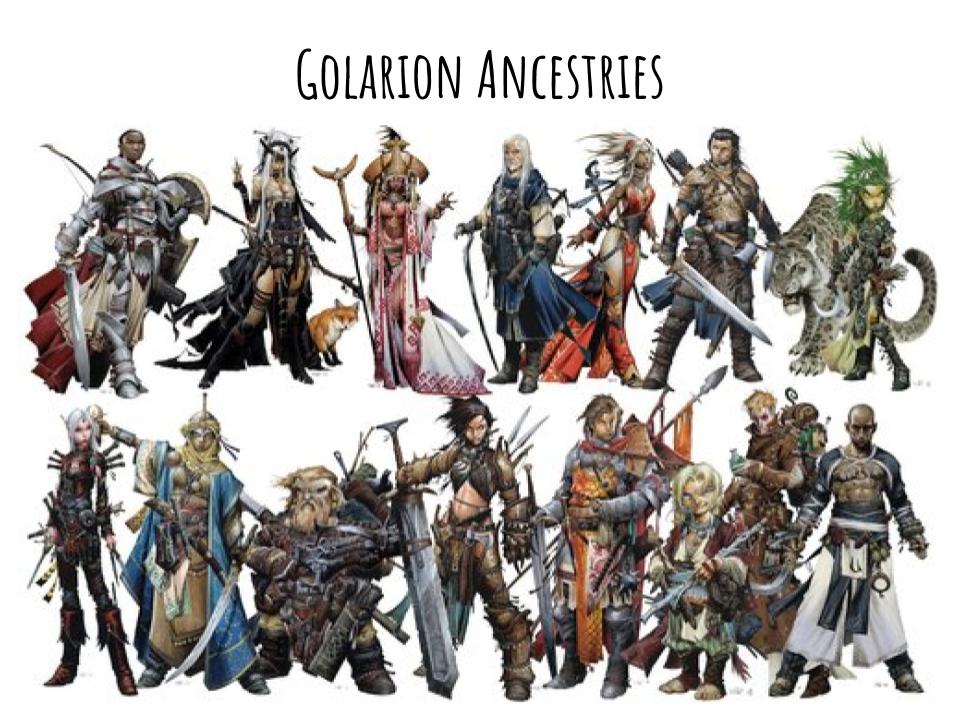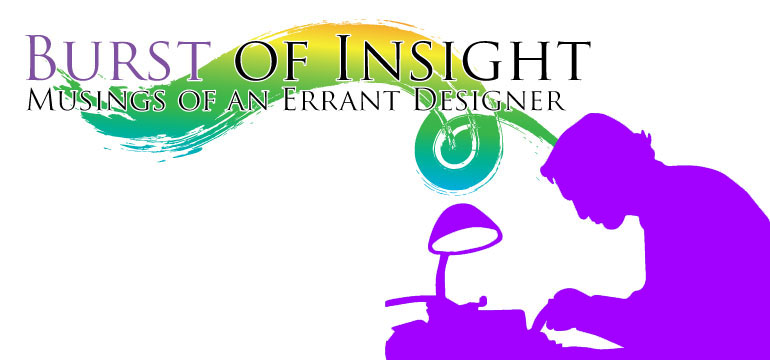Hurk hurt. The dwarf struggled to his feet and adjusted his grip on his axe. His vision blurred slightly and his ears still rung from the staggering blow he’d received from the stone giant’s hammer. Hurk grimaced dodging left. Iron ran out dully, as the hammer struck the stone floor like a falling anvil. Granite shards sprayed up from the ground as the giant raised the hammer again. “That was too close,” Hurk grumbled sourly shaking off the last of his disorientation.
“It wouldn’t be so close–if you didn’t get so close!” quipped Evynn, Hurk’s irritatingly cheerful halfling companion as she fired her crossbow into the back of the gray-skinned giant before dashing around the giant in a tight arc trying to stay in the creature’s blind spot. When she reached the collapsed pillar, the evoker Marrin was using for cover, Evynn leapt up without breaking stride and nimbly dashed up the length of the ruined support before crouching and fumbling for another bolt.
Marrin finished a complicated phrase and glowing runes of power began to encircle the human’s gesticulating hands. Hurk thought he recognized the last part of that incantation and as realization dawned he hurled himself to the ground narrowly avoiding being caught in the arc of crackling electricity the lanced from Marrin’s outstretched hands and into the giant’s exposed side.
Rolling to his feet, Hurk leapt at the still reeling stone giant. His axe bit deep into the giant’s lightning blackened hide armor. The coppery scent of blood joining the stench of ozone and burning fur. The force of the blow numbed Hurk’s arm and the dwarf struggled to pull the axe free even as the giant raised its hammer for another blow.
Then the giant’s grip on the weapon slackened and it lurched forward unsteady before it collapsed, a bolt from Evynn’s crossbow buried to the fletching in its neck. “That makes eight kills for me Hurk. How many do you have again?”
“Shut it Evynn.” Grumbled the dwarf but he couldn’t hide his smile. The tiny rogue may have just saved his life. Again.
Ancestry, species or race. Whatever term you prefer, this is a crucial element of most heroic fantasy roleplaying and Golarion is no exception. For most settings, the playable races are pretty much the same and heavily are influenced by Tolkien and Middle Earth. Anyone who’s been playing Pathfinder for a while can probably tell you what the traits for a particular ancestry are and even those that don’t know specifics have a pretty good feel for what the traits should be.
As I continue our discussion from my last post I’m going to focus more on getting the feel of the ancestries right rather than precisely duplicate each individual ability. After all, in the opening fiction, you probably didn’t notice the Hurk doesn’t have the mechanical benefits for fighting giants, or that Marryn doesn’t get an extra feat or any extra skill points. Those are not qualities that truly define those ancestries. When we adapt any character options to a new rules system we want to focus on the abilities that make an ancestry feel like it belongs on Golarion.
Before we get into my specific design choices I’m going to very briefly talk about the Genesys and Cypher game systems. I’m assuming anyone who’s sticking with me this far has at least a passing understanding of how these two games are played but I’ll address some basics for each game in case there’s someone who just wants to know.
Adapting Ancestries to Genesys
Genesys uses Fantasy Flight Games’ narrative dice system which means it the same basic mechanics as their Star Wars line (Edge of Empire, Age of Rebellion, Force and Destiny) with all the iconic “Galaxy far, far away…” filed off. The system features six attributes (see below) and a host of skills. Players attempt tasks by rolling a dice pool assembled from positive dice and negative dice. Positive dice are determined by basically combining the character’s relevant attribute and skill. While negative dice are set by the difficulty. The total pool can be further augmented (positively and negatively) by applying boost and setback dice for situational modifiers. The various dice have symbols instead of numbers and with a little practice are pretty easy to interpret.
When I first sat down with the Genesys rules to learn how to play my mind immediately went to creating my own content. That’s because while the rules are complete enough they are presented more as a toolbox for creating pretty much any world imaginable. So while I was penning my first versions of Pathfinder ancestries I spoke to my friend and Fantasy Flight Freelancer, Keith Kappel. Who offered some advice then directed me to an interview he did with HoloNet Uplink about creating new species for Star Wars. Again same basic rules so all of this advice translates. Armed with Keith’s advice and the section on species creation in the core rulebook I knocked out a number of Pathfinder ancestries.
Elves
Tall and graceful elves have delicate features and long pointed ears. Many of the nearly immortal elves master the primal forces of the wild to shape wonders of nature and magic. Relics that like their creators seem to impervious to the ravages of time. Others become attuned to the land and are renowned for their abilities as hunters and trackers.
Species Abilities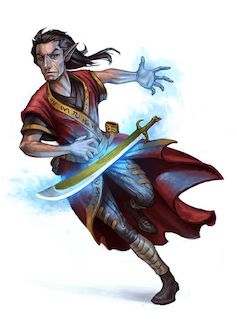
| 2 | 3 | 2 | 2 | 1 | 2 |
| Brawn | Agility | Intellect | Cunning | Willpower | Presence |
Starting Wound Threshold: 9 + Brawn
Starting Strain Threshold: 10 + Willpower
Starting Experience: 90 XP
Starting Skills: Elves begin with one rank in Perception. You still cannot train their Perception above rank 2 during character creation.
Elven Immunities: Elves are immune to magical sleep and adversaries add {Setback die} on Magic checks to cast curse spells that target an elf’s mental abilities.
Low Light Vision: Elves can see twice as far as a normal human in conditions of dim light. When making skill checks elves remove {one Setback Die} imposed due to darkness.
The Elf ancestry was one of the last of the core ancestries I decided to make. The Elf species that appears in the Genesys Core Rulebook certainly feels enough like a Golarion elf that it would probably pass okay but without low-light vision and the normal elven resistances I wasn’t sure my players would go for it hence the rebuild.
Goblins
A cruelly fun-loving species known for its acts of sadism and arson. Goblins live in tribal communities on the outskirts of civilization where they can survive largely as scavengers.
Species Abilities 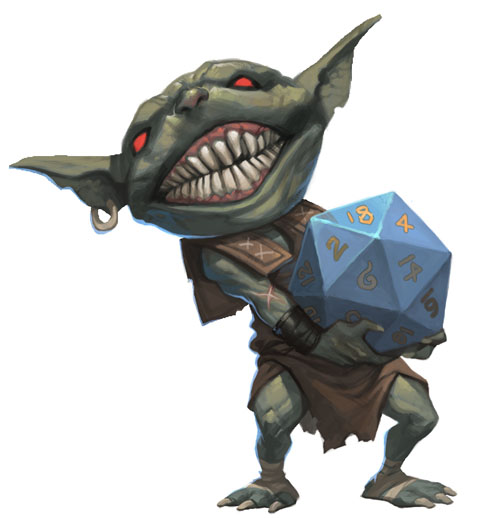
| 1 | 3 | 2 | 2 | 2 | 1 |
| Brawn | Agility | Intellect | Cunning | Willpower | Presence |
Starting Wound Threshold: 10 + Brawn
Starting Strain Threshold: 9 + Willpower
Starting Experience: 100
Starting Skills: Goblins begin with one rank in Stealth and another in Riding. You still cannot train their either of these skills above rank 2 during character creation.
Dark Vision: When making skill checks, goblins remove up to {two Setback Dice} imposed due to darkness.
Fast: In combat, adversaries add {one Setback Die} on Melee checks to hit a goblin.
Small: Due to their diminutive stature, goblins add {one Boost Die} when making Stealth checks.
It just doesn’t seem right to make a Genesys adaptation of Pathfinder and not stat up goblins as a viable option. Now, canny Star Wars and Genesys players may notice I’ve made what may be an unusual design choice with the goblin. I opted to not follow the lead of the Genesys core rulebook and size the goblin, halflings, or gnomes the way that Fantasy Flight did. They opted to make gnomes Silhouette 0 but as Keith explained to me that would make them faerie sized not half size. For a great many settings gnomes and goblins might be that small but not Golarion.
Silhouette 0 is small enough that you can fairly easily carry 10 Silhouette 0 items or creatures. I frankly cannot imagine carrying 10 goblins would be that easy.
Tieflings
Species Abilities
| 2 | 3 | 2 | 2 | 2 | 1 |
| Brawn | Agility | Intellect | Cunning | Willpower | Presence |
Starting Wound Threshold: 10 + Brawn
Starting Strain Threshold: 9 + Willpower
Starting Experience: 90
Starting Skills: Tieflings begin with one rank in Arcane. You still cannot train their Arcane skill above rank 2 during character creation.
Dark Vision: When making skill checks, Tieflings remove up to {two Setback Dice} imposed due to darkness.
Fiendish Resistance: When taking damage from acid, cold, or fire sources tieflings soak an additional 2 points.
Fiendish Strike: Tieflings have fangs, claws, horns or sharp bone spurs at their elbows. Some may just manifest hellfire in their touch. Regardless of its source, Tieflings may choose to attack with the following weapon profile: (Brawl; Damage +1; Critical 3; Range |Engaged|; Vicious 1).
The big things here are the absence of the darkness spell-like ability and the inclusion of a “Fiendish Strike.” So I could have written up a magical ability to make it darker at the character’s will. Instead, I opted to give Tieflings the Arcane skill. This served two ends. First, they can now craft a spell to make it dark per the magic rules and second it helps to link the infernal and abyssal sorcerer bloodlines to actual arcane power.
We can directly blame the addition of Fiendish Strike on two things. One, nearly every piece of Tiefling art ever (horns, claws, barbed tails abound) and two, Dave Gross’s character of Radovan who has bone spurs which he uses with painful efficiency in the novels and stories.
Adapting Ancestries to the Cypher System
The Cypher system functions quite a bit differently than most RPGs. In the Cypher System characters lower the difficulty of an action by having the right gear and skills and by applying Effort. There are only three attributes (Might, Speed, and Intellect). These attributes are expressed as pools that you can spend points from to apply effort. For a more comprehensive explanation of how to play the Cypher System including a demonstration of play, I have a Cypher System Primer posted on YouTube (part one | part two).
Now, as I discussed two weeks ago, the default means to create a character of another ancestry is to take a racial descriptor but then that character is defined more by the race than their personality. An alternative comes indirectly from another optional rule in the Cypher system core rules referred to as Flavor.
The Flavor rules allow you to customize a character type by adding and swapping ability options. This might be done by a GM who wants to make custom types for her setting or by a player with GM approval to fine tune a character to fit their vision. The current flavors include themes like stealth and magic.
With a little creativity, Ancestries can be framed in a similar way. Thus, a character who selects a special ancestry gains the basic qualities of the ancestry and may choose to select one or more of the other special abilities in place of abilities they may gain from their type. You can even add your ancestry to your character sentence (See my last blog) Merisiel is a graceful elven explorer who throws with deadly accuracy.
Ideally, each of these examples would have a few more optional abilities at least one per tier but this suffices for the moment as examples.
Dwarven Ancestry 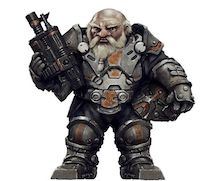
Basic Qualities
Inability: The difficulty of your Speed defense actions are hindered by one step. Inability
Dark Vision. You treat illumination as if it was one category brighter. You treat darkness as very dim light, you treat very dim light as dim light, and you treat dim light as normal illumination.
Optional Special Abilities
Tier 1: Stability. You are trained in tasks related to keeping your balance and standing your ground.
Tier 1: Stone Cunning. You are trained in tasks related to stone, including sensing stonework traps, knowing the history of a particular piece of stone-craft, and knowing your distance beneath the surface. You are also trained in the use of the tools required to shape and mine stone.
Tier 2: Experienced with Armor. The cost reduction from your Practiced in Armor ability improves. You now reduce the Speed Effort cost for wearing armor by an additional 1. Enabler.
Tier 2: Defensive Training. You are trained in all defense tasks related to fighting giants and dragons.
Tier 4: Mastery with Armor. The cost reduction from your Practiced in Armor ability improves. You now reduce the Speed Effort cost for wearing armor by an additional 1. Enabler.
Recommended Foci: Explores Dark Places, Fights Dirty, Masters Defense, Masters Weaponry, Never Says Die, Stands Like a Bastion.
Elven Ancestry 
Basic Qualities
Fragile. When you fail a Might defense roll to avoid damage, you take 1 extra point of damage. Inability.
Elven Perception. You have keen senses particularly sight. You are trained in tasks involving perception. Enabler.
Optional Special Abilities
Tier 1: Arcane Resistance. You are trained in tasks of resisting magical mental effects and are immune to magical sleep effects. Enabler.
Tier 1: Precision Aim (1 Intellect Point). You take time to line up your shot with a ranged or thrown weapon. The next time you attack your target before the end of the next round reduce the difficulty by one step or deal an additional point of damage. Action.
Tier 2: Breadth of Experience (2 Intellect Points). At the beginning of each day, choose one task (other than attacks or defense) on which you will concentrate. For the rest of that day, you’re trained in that task. You can use this ability with a skill you’re already trained in to become specialized by spending an additional 2 Intellect points. Action.
Recommended Foci: Carries a Quiver, Casts Spells, Fights with Panache, Moves Like a Cat, Speaks for the Land, Throws with Deadly Accuracy.
Hopefully, you found these examples helpful and/or thought-provoking. Next time, We’ll look a little at campaign traits.
This blog post uses trademarks and/or copyrights owned by Paizo Inc., which are used under Paizo’s Community Use Policy. We are expressly prohibited from charging you to use or access this content. This blog is not published, endorsed, or specifically approved by Paizo Inc. For more information about Paizo’s Community Use Policy, please visit paizo.com/communityuse. For more information about Paizo Inc. and Paizo products, please visit paizo.com.

